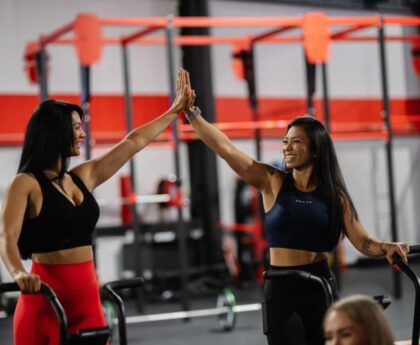CrossFit has long been revered for its intensity, community spirit, and transformative impact on fitness enthusiasts worldwide. Now, with the advent of CrossFit 2.0, this high-intensity training regimen is taking workouts to the next level which pushes the boundaries of physical performance. In this post, we spearhead the functions of CrossFit 2.0, dissecting how these cutting-edge workouts and techniques have made their way to fitness headlines and regimens today.
Advanced Functional Movements
CrossFit 2.0 places a renewed emphasis on advanced functional movements, designed to optimise both efficiency and effectiveness in workouts. These movements go beyond traditional exercises, incorporating dynamic, multi-joint movements that mimic real-life activities and challenges. From complex gymnastic manoeuvres to Olympic weightlifting techniques, CrossFit 2.0 challenges participants to master a diverse range of skills and abilities.
Periodization and Progressive Overload
In CrossFit 2.0, workouts are strategically structured using periodization and progressive overload principles to ensure continuous gains in strength, endurance, and performance. Periodization involves dividing training cycles into distinct phases, each with specific goals and intensity levels, to prevent plateaus. Progressive overload, on the other hand, involves gradually increasing the intensity, volume, or complexity of workouts over time to stimulate muscle growth and improve fitness levels systematically.
Individualised Programming
CrossFit 2.0 embraces individualised programming, recognizing that one-size-fits-all approaches may not cater to the diverse needs and goals of participants. Through personalised assessments and consultations, coaches develop customised workout plans tailored to each individual’s fitness levels. This personalised approach ensures that participants receive targeted guidance, support, and progress tracking, optimising their potential for success and minimising the risk of injury.
Integration of Technology
In the digital age, CrossFit 2.0 integrates technology to enhance performance optimization and facilitate data-driven decision-making. Wearable fitness trackers, heart rate monitors, and performance analytics software provide real-time feedback on workout intensity and recovery status. By harnessing this data, coaches can make informed adjustments to training protocols and identify areas for improvement.
Community and Competition
Despite its focus on individual progress, CrossFit 2.0 continues to foster a strong sense of community and camaraderie among participants. Through friendly competition and team-based workouts, CrossFit 2.0 creates an environment where participants can push their limits and draw inspiration from their peers. This sense of belonging and mutual support not only enhances motivation but also reinforces the core values of teamwork, perseverance, and resilience.
To Conclude
CrossFit 2.0 represents an exciting evolution of the CrossFit methodology, introducing next-level workouts and techniques that challenge participants to push their boundaries. With its focus on advanced functional movements and technology integration, CrossFit 2.0 continues to inspire and empower fitness enthusiasts. At its core, CrossFit training remains at the forefront of the fitness industry, driving innovation and transformation in the quest for peak physical and mental well-being.





